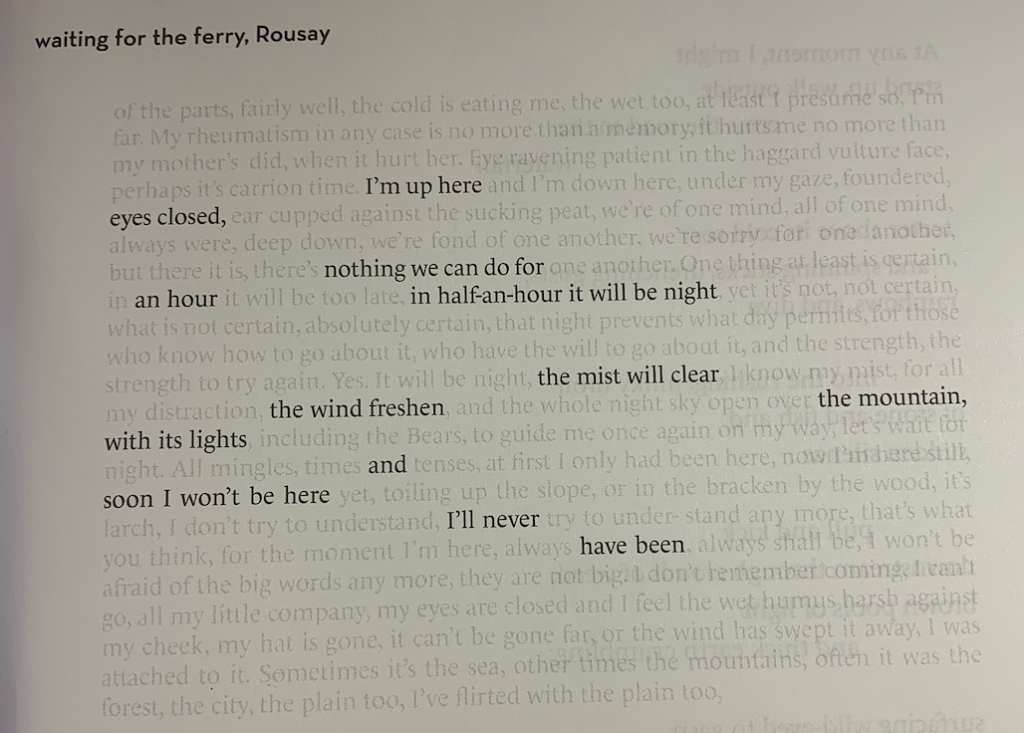Disappearance / north sea poems /
Lesley Harrison
(Shearsman Books, 2020); pbk £10.95
In her first full-length collection after multiple pamphlet publications, Lesley Harrison envisions a voyage towards healing humanity’s fractured bond with the natural world. Through archival documents, past voyages, and local myths deftly explored, Harrison ties the past and present together in the shared space of the North Sea. The book’s sizing and use of photographic visuals give the impression of an enchanting picture book— the feeling of being young, when everything presents new and exciting opportunities, where simply living bears testimony to the vitality of nature, and its importance for the human imagination.
Harrison creates a perfect balance between abstraction and understanding; her context notes guide readers along, so we can easily explore the intention without compromising on poetics. ‘Birds of the North Sea’ is a lyrical list of translated bird names, ‘as they alter […] along migration routes’; they are ‘to be read aloud’:
arctic skua tyvjo – aulin – kjove – kjói-tyvjo
In notes and observations, Harrison encourages us to be attentive to sounds and words, to act and be present alongside her poetry, to expand our view of the world and push the limits of language. Despite potentially not being able to understand the words, Harrison is still able to take readers on a bird’s journey, which they can enjoy and appreciate. She empowers us to inhabit nature’s trials and tribulations through our own thoughts and voices.
This empowering reclaiming of our bond with nature continues throughout ‘Orkney Road Trip with Samuel Beckett’ and the ‘The Sea Bed’ sequences of ‘Close’s Fishermen’s Chart. Section 2. The North Sea.’ Here, paragraphs of faded text are printed in grey with certain words highlighted in black and bold. The poetry becomes a seabed through which we can beachcomb the bold words to fit the poem together.
Observing Harrison’s work is much like observing nature itself; no matter what specific point you focus on, everything else is still thrumming in the background, a beautiful plethora of energy and activity, proving nature to be more alive and encompassing than we could ever imagine.
Nature’s unknown depths are plumbed, and Harrison advocates direct engagement with it. In ‘Thursday Poem’ she observes
the flood that will wash her clean again: her broken
nails, her still, lovely face full of joy, swallowing.
Depicting a woman submerged in the North Sea, Harrison compares this experience to ‘opening a door’ as ‘the water pressed her down.’ The engagement with the water is a deeply intimate ritual that creates a sacred bond, the narrator absorbing the natural phenomena around her. Likewise, ‘Spate’ explores kinship with the sea:
and I dissolve,
a shadow in the salt, a green amongst greens[.]
This narrator also embraces nature and becomes completely engulfed by it. The seamless shifting of perspective between the poems, from third to first person, presents this cleansing ritual from multiple perspectives and angles, and readers are at once insiders and outsiders, participants and observers. Alluring enjambment and alliteration help to enforce a sense of contentedness and acceptance. Not afraid to put humans in their place within the natural hierarchy, her subjects submit to these powers, embracing the ecstasy, joy, and comfort that can be found beyond the artificial creations humanity have made for themselves.
By examining human ‘disappearance’ into the natural world, Harrison brings into light our unquestionable connection to it despite its many mysteries. We may lack control or understanding of our world, but she shows that we should not avoid our vital relationship with it.
Orla Davey



Leave a Reply